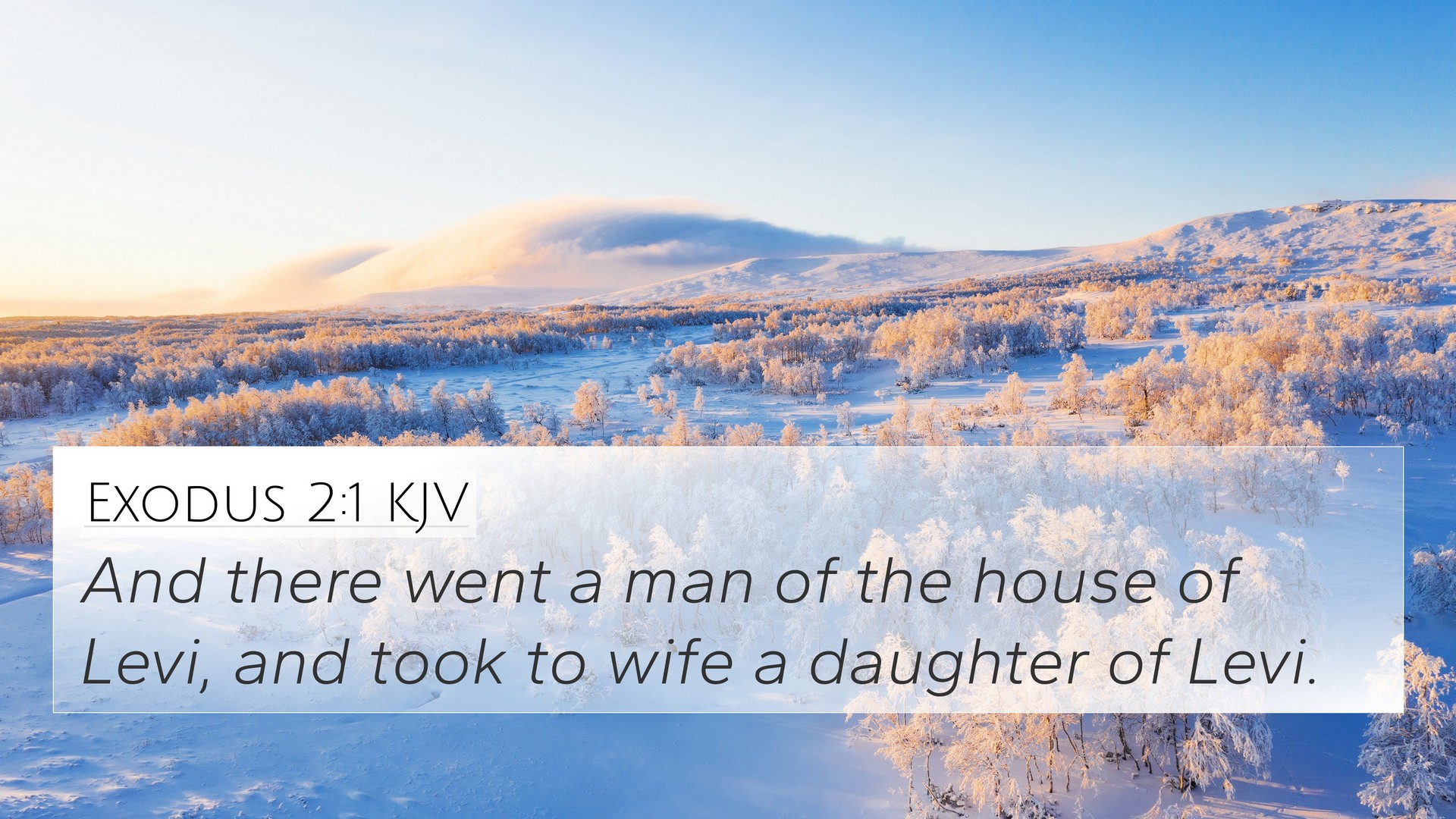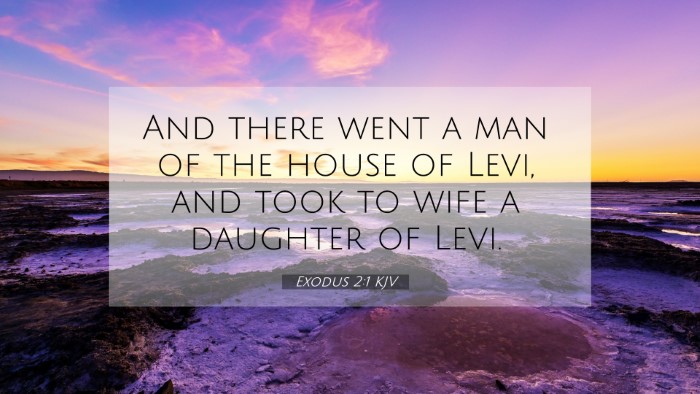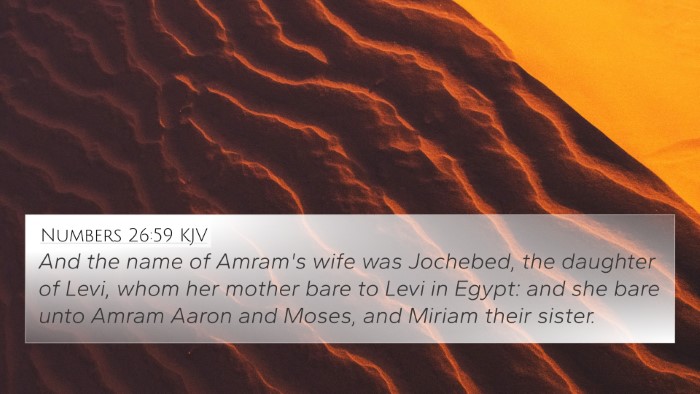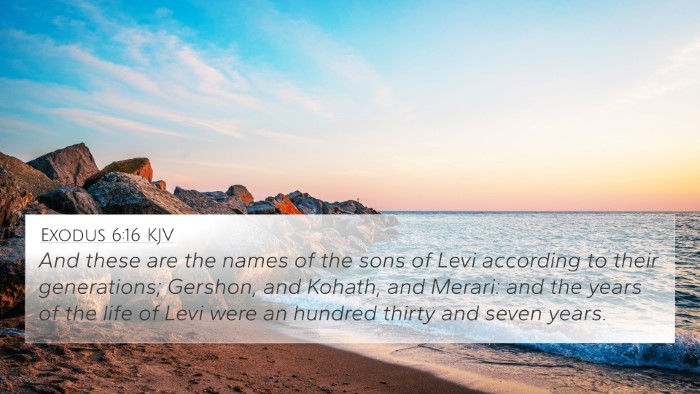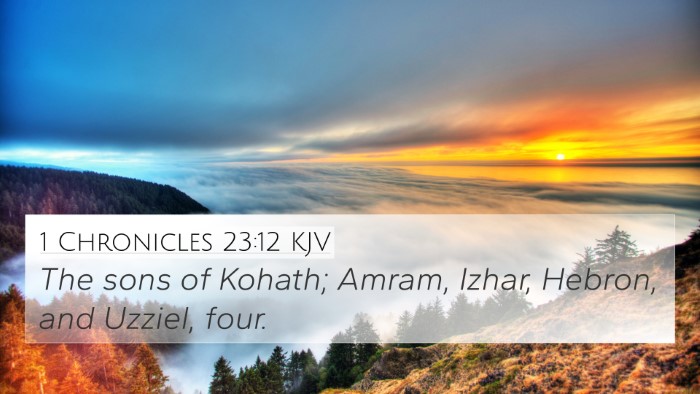Understanding Exodus 2:1
Exodus 2:1 states, "And there went a man of the house of Levi, and took to wife a daughter of Levi." This verse introduces the pivotal figure of Moses, highlighting his lineage and the circumstances of his birth, a theme that runs throughout the Scriptures.
Contextual Significance
The significance of Exodus 2:1 lies not only in the details of Moses' parentage but also its implications for the narrative of deliverance in the Bible. From a broader perspective, this verse establishes the foundation for understanding God's providence in Israel's history.
Thematic Analysis
- Divine Selection: The choice of a Levite man marrying a Levite woman indicates God's intention to raise a deliverer from among His chosen people.
- Covenantal Connections: The verse connects to God's covenant promise to Abraham, Isaac, and Jacob regarding their descendants and the future of Israel.
- Familial Patterns: This marriage reflects the larger biblical theme of family and lineage leading to significant redemptive history.
Commentary Insights
According to Matthew Henry, this verse illustrates God’s provision and preparatory work for the deliverance of Israel. He emphasizes that the lineage of Moses is an important reminder of God’s faithfulness to His promises. Albert Barnes echoes this sentiment by noting that the Levites were set apart for service to God, thus foreshadowing Moses' future role as a leader and mediator.
Adam Clarke further points out the importance of the Levite lineage, asserting that Moses' parents' action was both a cultural and spiritual statement, emphasizing faith in God despite the oppressive circumstances of Egypt.
Cross-References to Exodus 2:1
- Hebrews 11:23: Highlights the faith of Moses' parents in hiding him to protect him.
- Exodus 6:20: References Moses' lineage by mentioning Amram, his father.
- Numbers 26:59: Confirms the genealogy of Moses as a Levite.
- Matthew 1:1-16: Connects Moses' lineage to the genealogy of Christ, showcasing the importance of family lines.
- Luke 1:5: The priestly descent of Zechariah relates to the role of the Levites.
- Genesis 46:11: Acknowledges Levi's descendants, establishing historical context.
- Exodus 3:10: God’s call to Moses as a pivotal moment in Israel’s deliverance.
Exploration of Related Themes
The passage raises important questions about how biblical narratives connect. For instance, we see a reflection of God's ongoing covenantal relationship with His people—one that spans from Genesis through to Jesus Christ in the New Testament.
Utilizing Cross-References
For those engaged in Bible study, utilizing tools such as a Bible concordance or a cross-reference Bible study guide can deepen understanding of the interconnections throughout the Scriptures. For instance, by exploring familial lines through texts and their implications, readers can gain insights into God's overall redemptive purpose.
Comparative Bible Study
An in-depth analysis of passages such as Exodus 2:1 alongside other verses helps to uncover the richness of God's plan across scripture. For example, looking at the connections between Old Testament narratives and the New Testament revelation can provide a greater understanding of the meaning of biblical events.
Final Thoughts
Exodus 2:1 serves as a microcosm of the larger themes present throughout the Bible: deliverance, faithfulness, and God's divine orchestration of events. Utilizing the resources available for cross-referencing and thematic connections not only enriches individual understanding but invites deeper engagement with the biblical text.
